Influence of the Number of Ground Motions on Fragility Analysis of 5 MW Wind Turbines Subjected to Aerodynamic and Seismic Loads Interaction
Abstract
:1. Introduction
2. Coupled Excitation of Aerodynamic and Seismic Loads
2.1. Aerodynamic Load
2.2. Seismic Model
3. Fragility Analysis
3.1. Fragility Function
3.2. Damage State
4. Simulation Results and Discussion
4.1. The Influence of the Number of Ground Motions on Dynamic Response
4.2. The Influence of the Number of Ground Motions on Fragility Function Parameters Estimation
4.3. The Influence of the Number of Ground Motions on 95% Confidence Interval for Estimated Parameters
4.4. The Influence of Different Wind Spectra on the Sufficient Number of Ground Motions
5. Conclusions
Author Contributions
Funding
Data Availability Statement
Acknowledgments
Conflicts of Interest
Appendix A
| No. | Event | Year | Station | Magnitude | R 1 (km) | Vs30 2 (m/s) |
|---|---|---|---|---|---|---|
| 1 | San Fernando | 1971 | Wheeler Ridge-Ground | 6.6 | 70.23 | 347.67 |
| 2 | San Fernando | 1971 | Whittier Narrows Dam | 6.6 | 39.45 | 298.68 |
| 3 | Imperial Valley-06 | 1979 | Coachella Canal #4 | 6.5 | 50.10 | 336.49 |
| 4 | Irpinia_ Italy-02 | 1980 | Bovino | 6.2 | 43.50 | 356.39 |
| 5 | Coalinga-01 | 1983 | Parkfield-Cholame 12W | 6.4 | 55.77 | 359.03 |
| 6 | Coalinga-01 | 1983 | Parkfield-Cholame 1E | 6.4 | 43.68 | 326.64 |
| 7 | Coalinga-01 | 1983 | Parkfield-Cholame 4AW | 6.4 | 47.57 | 283.38 |
| 8 | Coalinga-01 | 1983 | Parkfield-Cholame 4W | 6.4 | 46.35 | 410.40 |
| 9 | Coalinga-01 | 1983 | Parkfield-Cholame 6W | 6.4 | 50.20 | 251.57 |
| 10 | Coalinga-01 | 1983 | Parkfield-Cholame 8W | 6.4 | 51.75 | 256.82 |
| 11 | Coalinga-01 | 1983 | Parkfield-Fault Zone 10 | 6.4 | 31.62 | 372.73 |
| 12 | Coalinga-01 | 1983 | Parkfield-Fault Zone 2 | 6.4 | 38.95 | 294.26 |
| 13 | Coalinga-01 | 1983 | Parkfield-Fault Zone 6 | 6.4 | 32.87 | 266.65 |
| 14 | Coalinga-01 | 1983 | Parkfield-Fault Zone 9 | 6.4 | 31.71 | 372.26 |
| 15 | Coalinga-01 | 1983 | Parkfield-Gold Hill 2E | 6.4 | 33.07 | 360.92 |
| 16 | Coalinga-01 | 1983 | Parkfield-Gold Hill 2W | 6.4 | 37.02 | 290.50 |
| 17 | Coalinga-01 | 1983 | Parkfield-Gold Hill 4W | 6.4 | 41.10 | 421.20 |
| 18 | Coalinga-01 | 1983 | Parkfield-Vineyard Cany 3W | 6.4 | 32.17 | 308.87 |
| 19 | Morgan Hill | 1984 | Capitola | 6.2 | 39.08 | 288.62 |
| 20 | Morgan Hill | 1984 | Fremont-Mission San Jose | 6.2 | 31.34 | 367.57 |
| 21 | Morgan Hill | 1984 | Los Banos | 6.2 | 63.16 | 262.05 |
| 22 | Taiwan SMART1(40) | 1986 | SMART1 O01 | 6.3 | 61.97 | 267.67 |
| 23 | N. Palm Springs | 1986 | Hemet Fire Station | 6.1 | 34.71 | 328.09 |
| 24 | N. Palm Springs | 1986 | Indio | 6.1 | 35.57 | 307.54 |
| 25 | N. Palm Springs | 1986 | Indio-Coachella Canal | 6.1 | 41.93 | 339.02 |
| 26 | N. Palm Springs | 1986 | Landers Fire Station | 6.1 | 35.36 | 331.02 |
| 27 | N. Palm Springs | 1986 | San Jacinto-Valley Cemetery | 6.1 | 30.97 | 330.74 |
| 28 | N. Palm Springs | 1986 | Winchester Page Bros R | 6.1 | 38.22 | 287.87 |
| 29 | Whittier Narrows-01 | 1987 | Arleta-Nordhoff Fire Sta | 6.0 | 36.97 | 297.71 |
| 30 | Whittier Narrows-01 | 1987 | Canoga Park-Topanga Can | 6.0 | 48.96 | 267.49 |
| 31 | Whittier Narrows-01 | 1987 | Canyon Country-W Lost Cany | 6.0 | 48.18 | 325.60 |
| 32 | Whittier Narrows-01 | 1987 | Featherly Park-Maint | 6.0 | 37.92 | 367.54 |
| 33 | Whittier Narrows-01 | 1987 | Fountain Valley-Euclid | 6.0 | 39.45 | 270.54 |
| 34 | Whittier Narrows-01 | 1987 | Huntington Beach-Lake St | 6.0 | 44.58 | 315.52 |
| 35 | Whittier Narrows-01 | 1987 | LB-Recreation Park | 6.0 | 33.68 | 282.00 |
| 36 | Whittier Narrows-01 | 1987 | Lancaster-Med Off FF | 6.0 | 67.62 | 339.14 |
| 37 | Whittier Narrows-01 | 1987 | Leona Valley #6 | 6.0 | 59.60 | 327.44 |
| 38 | Whittier Narrows-01 | 1987 | Malibu-Point Dume Sch | 6.0 | 63.23 | 349.54 |
| 39 | Whittier Narrows-01 | 1987 | Newhall-Fire Sta | 6.0 | 52.20 | 269.14 |
| 40 | Whittier Narrows-01 | 1987 | Newhall-W Pico Canyon Rd. | 6.0 | 58.61 | 285.93 |
| 41 | Whittier Narrows-01 | 1987 | Pacoima Kagel Canyon USC | 6.0 | 36.29 | 323.76 |
| 42 | Whittier Narrows-01 | 1987 | Panorama City-Roscoe | 6.0 | 36.55 | 318.16 |
| 43 | Whittier Narrows-01 | 1987 | Sun Valley-Roscoe Blvd | 6.0 | 34.99 | 320.93 |
| 44 | Whittier Narrows-01 | 1987 | Sylmar-Sayre St | 6.0 | 40.61 | 348.87 |
| 45 | Whittier Narrows-01 | 1987 | Terminal Island-S Seaside | 6.0 | 40.36 | 260.60 |
| 46 | Whittier Narrows-01 | 1987 | Torrance-W 226th St | 6.0 | 36.11 | 289.04 |
| 47 | Big Bear-01 | 1992 | Hesperia-4th & Palm | 6.5 | 44.65 | 358.36 |
| 48 | Big Bear-01 | 1992 | Indio-Riverside Co Fair Grnds | 6.5 | 78.21 | 282.14 |
| 49 | Big Bear-01 | 1992 | San Bernardino-2nd & Arrowhead | 6.5 | 33.79 | 325.83 |
| 50 | Big Bear-01 | 1992 | San Bernardino-E & Hospitality | 6.5 | 35.20 | 296.97 |
References
- Lee, J.; Zhao, F. Global Wind Report 2021; Global Wind Energy Council (GWEC): Brussels, Belgium, 2021. [Google Scholar]
- Mo, R.; Cao, R.; Liu, M.; Li, M. Effect of ground motion directionality on seismic dynamic responses of monopile offshore wind turbines. Renew. Energy 2021, 175, 179–199. [Google Scholar] [CrossRef]
- Pozos-Estrada, A.; Chávez, M.M.; Jaimes, M.; Arnau, O.; Guerrero, H. Damages observed in locations of Oaxaca due to the Tehuantepec Mw8.2 earthquake, Mexico. Nat. Hazards 2019, 97, 623–641. [Google Scholar] [CrossRef]
- DNV. Design of Offshore Wind Turbine Structures; DNV-OS-J101; Det Norske Veritas (DNV): Oslo, Norway, 2014. [Google Scholar]
- IEC. IEC 61400-1 Ed, 3: Wind Turbines-Part 1: Design Requirements; International Electrotechnical Commission: Geneva, Switzerland, 2005. [Google Scholar]
- Yuan, C.; Chen, J.; Li, J.; Xu, Q. Fragility analysis of large-scale wind turbines under the combination of seismic and aerody-namic loads. Renew. Energy 2017, 113, 1122–1134. [Google Scholar] [CrossRef]
- Yuan, C.; Li, J.; Chen, J.; Xu, Q.; Xie, Y. Study on the Influence of Baseline Control System on the Fragility of Large-Scale Wind Turbine considering Seismic-Aerodynamic Combination. Adv. Civ. Eng. 2020, 2020, 1–15. [Google Scholar] [CrossRef]
- Zuo, H.; Bi, K.; Hao, H.; Xin, Y.; Li, J.; Li, C. Fragility analyses of offshore wind turbines subjected to aerodynamic and sea wave loadings. Renew. Energy 2020, 160, 1269–1282. [Google Scholar] [CrossRef]
- Sheng, C.; Hong, H. Reliability and fragility assessment of offshore floating wind turbine subjected to tropical cyclone hazard. Struct. Saf. 2021, 93, 102138. [Google Scholar] [CrossRef]
- Chen, X.-B.; Li, J.; Chen, J.-Y. Wind-induced response analysis of a wind turbine tower including the blade-tower coupling effect. J. Zhejiang Univ. A 2009, 10, 1573–1580. [Google Scholar] [CrossRef]
- Asareh, M.-A.; Schonberg, W.; Volz, J. Fragility analysis of a 5-MW NREL wind turbine considering aero-elastic and seismic interaction using finite element method. Finite Elements Anal. Des. 2016, 120, 57–67. [Google Scholar] [CrossRef]
- Tran, T.-T.; Kang, S.; Lee, J.-H.; Lee, D. Directional Bending Performance of 4-Leg Jacket Substructure Supporting a 3 MW Offshore Wind Turbine. Energies 2021, 14, 2725. [Google Scholar] [CrossRef]
- Sharmin, F.; Hussan, M.; Kim, D. Effect of structural nonlinearity on probabilistic risk assessment of offshore wind turbine including inelastic soil medium. Civ. Eng. Environ. Syst. 2017, 34, 221–237. [Google Scholar] [CrossRef]
- Sharmin, F.; Hussan, M.; Kim, D.; Cho, S.G. Influence of soil-structure interaction on seismic responses of offshore wind turbine considering earthquake incident angle. Earthq. Struct. 2017, 13, 39–50. [Google Scholar]
- Dimova, S.L.; Hirata, K. Simplified seismic fragility analysis of structures with two types of friction devices. Earthq. Eng. Struct. Dyn. 2000, 29, 1153–1175. [Google Scholar] [CrossRef]
- Hwang, H.; Liu, J.B.; Chiun, Y.H. Seismic Fragility Analysis of Highway Bridges. Available online: https://core.ac.uk/download/pdf/4818619.pdf (accessed on 21 October 2020).
- Choi, E.; DesRoches, R.; Nielson, B. Seismic fragility of typical bridges in moderate seismic zones. Eng. Struct. 2004, 26, 187–199. [Google Scholar] [CrossRef]
- Ellingwood, B.R.; Celik, O.C.; Kinali, K. Fragility assessment of building structural systems in Mid-America. Earthq. Eng. Struct. Dyn. 2007, 36, 1935–1952. [Google Scholar] [CrossRef]
- Zhang, J.; Huo, Y. Evaluating effectiveness and optimum design of isolation devices for highway bridges using the fragility function method. Eng. Struct. 2009, 31, 1648–1660. [Google Scholar] [CrossRef]
- Mitropoulou, C.C.; Papadrakakis, M. Developing fragility curves based on neural network IDA predictions. Eng. Struct. 2011, 33, 3409–3421. [Google Scholar] [CrossRef]
- Ramanathan, K.; Padgett, J.E.; DesRoches, R. Temporal evolution of seismic fragility curves for concrete box-girder bridges in California. Eng. Struct. 2015, 97, 29–46. [Google Scholar] [CrossRef]
- Cha, Y.J.; Bai, J.W. Seismic fragility estimates of a moment-resisting frame building controlled by MR dampers using perfor-mance-based design. Eng. Struct. 2016, 116, 192–202. [Google Scholar] [CrossRef]
- Nuta, E. Seismic Analysis of Steel Wind Turbine Towers in the Canadian Environment; University of Toronto: Toronto, ON, Canada, 2010. [Google Scholar]
- Kim, D.H.; Lee, S.G.; Lee, I.K. Seismic fragility analysis of 5 MW offshore wind turbine. Renew. Energy 2014, 65, 250–256. [Google Scholar] [CrossRef]
- Patil, A.; Jung, S.; Kwon, O.-S. Structural performance of a parked wind turbine tower subjected to strong ground motions. Eng. Struct. 2016, 120, 92–102. [Google Scholar] [CrossRef]
- Mo, R.; Kang, H.; Li, M.; Zhao, X. Seismic Fragility Analysis of Monopile Offshore Wind Turbines under Different Operational Conditions. Energies 2017, 10, 1037. [Google Scholar] [CrossRef] [Green Version]
- Hemmati, A.; Oterkus, E.; Barltrop, N. Fragility reduction of offshore wind turbines using tuned liquid column dampers. Soil Dyn. Earthq. Eng. 2019, 125, 105705. [Google Scholar] [CrossRef]
- Ali, A.; De Risi, R.; Sextos, A.; Goda, K.; Chang, Z. Seismic vulnerability of offshore wind turbines to pulse and non-pulse records. Earthq. Eng. Struct. Dyn. 2019, 49, 24–50. [Google Scholar] [CrossRef]
- Chaudhari, V.; Somala, S.N. Seismic performance of offshore wind turbine in the vicinity of seamount subduction zone. Structures 2021, 34, 423–432. [Google Scholar] [CrossRef]
- Del Campo, J.O.M.; Pozos-Estrada, A. Multi-hazard fragility analysis for a wind turbine support structure: An application to the Southwest of Mexico. Eng. Struct. 2020, 209, 109929. [Google Scholar] [CrossRef]
- Mardfekri, M.; Gardoni, P. Probabilistic demand models and fragility estimates for offshore wind turbine support structures. Eng. Struct. 2013, 52, 478–487. [Google Scholar] [CrossRef]
- Mo, R.; Cao, R.; Liu, M.; Li, M.; Huang, Y. Seismic fragility analysis of monopile offshore wind turbines considering ground motion directionality. Ocean Eng. 2021, 235, 109414. [Google Scholar] [CrossRef]
- Jonkman, J.M.; Butterfield, S.; Musial, W.; Scott, G. Definition of a 5-MW Reference Wind Turbine for Offshore System Devel-Opment; National Renewable Energy Lab (NREL): Golden, CO, USA, 2009. [Google Scholar]
- Jalayer, F. Direct Probabilistic Seismic Analysis: Implementing Non-Linear Dynamic Assessments; Stanford University: Stanford, CA, USA, 2003. [Google Scholar]
- Baker, J.W.; Allin, C.C. Spectral shape, epsilon and record selection. Earthq. Eng. Struct. Dyn. 2006, 35, 1077–1095. [Google Scholar] [CrossRef]
- Hancock, J.; Bommer, J.J.; Stafford, P.J. Numbers of scaled and matched accelerograms required for inelastic dynamic analyses. Earthq. Eng. Struct. Dyn. 2008, 37, 1585–1607. [Google Scholar] [CrossRef] [Green Version]
- Banerjee, A.K.; Pramanik, D.; Roy, R. Seismic structural fragilities: Proposals for improved methodology per spectral matching of accelerogram. Eng. Struct. 2016, 111, 538–551. [Google Scholar] [CrossRef]
- Shome, N. Probabilistic Seismic Demand Analysis of Nonlinear Structures; Stanford University: Stanford, CA, USA, 1999. [Google Scholar]
- Gehl, P.; Douglas, J.; Seyedi, D.M. Influence of the Number of Dynamic Analyses on the Accuracy of Structural Response Estimates. Earthq. Spectra 2015, 31, 97–113. [Google Scholar] [CrossRef] [Green Version]
- Cimellaro, G.P.; Reinhorn, A.M.; D’Ambrisi, A.; De Stefano, M. Fragility Analysis and Seismic Record Selection. J. Struct. Eng. 2011, 137, 379–390. [Google Scholar] [CrossRef]
- Jin, C.; Chi, S. Seismic fragility analysis of high earth-rockfill dams considering the number of ground motion records. Math. Probl. Eng. 2019, 2019, 1–12. [Google Scholar] [CrossRef]
- Jonkman, J.M.; Buhl, J.M.L. FAST User’s Guide; National Renewable Energy Laboratory: Golden, CO, USA, 2005; Volume 365, p. 366. [Google Scholar]
- Martin, O.L.H. Aerodynamics of Wind Turbines, 3rd ed.; Earthscan: London, UK, 2015. [Google Scholar]
- Chen, J.; Yuan, C.; Li, J.; Xu, Q. Semi-active fuzzy control of edgewise vibrations in wind turbine blades under extreme wind. J. Wind Eng. Ind. Aerodyn. 2015, 147, 251–261. [Google Scholar] [CrossRef]
- Burton, T.; Jenkins, N.; Sharpe, D.; Bossanyi, E. Wind Energy Handbook; John Wiley & Sons: Hoboken, NJ, USA, 2011. [Google Scholar]
- Munson, B.R.; Okiishi, T.H.; Huebsch, W.W.; Rothmayer, A.P. Fluid Mechanics; Wiley: Singapore, 2013. [Google Scholar]
- Jonkman, J.M.; Buhl, J.M.L. New Developments for the NWTC’s FAST Aeroelastic HAWT Simulator; National Renewable Energy Lab: Golden, CO, USA, 2003. [Google Scholar]
- Asareh, M.A.; Prowell, I. Seismic Loading for FAST. Contract 2012, 303, 275–300. [Google Scholar] [CrossRef] [Green Version]
- Prowell, I.; Elgamal, A.; Romanowitz, H.; Duggan, J.E.; Jonkman, J. Earthquake Response Modeling for a Parked and Operating Megawatt-Scale Wind Turbine; National Renewable Energy Lab: Golden, CO, USA, 2010. [Google Scholar] [CrossRef] [Green Version]
- Prowell, I.; Elgamal, A.W.M.; Jonkman, J.M. FAST Simulation of Wind Turbine Seismic Response; National Renewable Energy Laboratory: Golden, CO, USA, 2010. [Google Scholar]
- Prowell, I.; Elgamal, A.; Uang, C.; Jonkman, J. Estimation of Seismic Load Demand for a Wind Turbine in the Time Domain: Preprint; National Renewable Energy Lab: Golden, CO, USA, 2010. [Google Scholar] [CrossRef] [Green Version]
- Asareh, M.A.; Prowell, I. A Simplified Approach for Implicitly Considering Aerodynamics in the Seismic Response of Utility Scale Wind Turbines. In Proceedings of the 53rd AIAA/ASME/ASCE/AHS/ASC Structures, Structural Dynamics and Materials Conference, Palm Springs, CA, USA, 23–26 April 2012. [Google Scholar] [CrossRef]
- Asareh, M.-A.; Prowell, I.; Volz, J.; Schonberg, W. A computational platform for considering the effects of aerodynamic and seismic load combination for utility scale horizontal axis wind turbines. Earthq. Eng. Eng. Vib. 2016, 15, 91–102. [Google Scholar] [CrossRef]
- Asareh, M.-A.; Schonberg, W.; Volz, J. Effects of seismic and aerodynamic load interaction on structural dynamic response of multi-megawatt utility scale horizontal axis wind turbines. Renew. Energy 2016, 86, 49–58. [Google Scholar] [CrossRef]
- National Renewable Energy Laboratory (NREL). FAST. Available online: https://www.nrel.gov/wind/nwtc/fast.html (accessed on 23 February 2016).
- Eads, L.; Miranda, E.; Krawinkler, H.; Lignos, D.G. An efficient method for estimating the collapse risk of structures in seismic regions. Earthq. Eng. Struct. Dyn. 2012, 42, 25–41. [Google Scholar] [CrossRef]
- Baker, J. Efficient Analytical Fragility Function Fitting Using Dynamic Structural Analysis. Earthq. Spectra 2015, 31, 579–599. [Google Scholar] [CrossRef]
- Qin, H.; Liu, M.; Wang, Y.; Zhao, J.; Zeng, X. China: An Emerging Offshore Wind Development Hotspot with A New Assessment of China’s Offshore Wind Potential; WWF, CWEA and Sun-Yet-Sen University: Beijing, China, 2010; p. 64. [Google Scholar]
- China, P.R. Code for Seismic Design Of Buildings; China Architecture & Building Press: Beijing, China, 2010. [Google Scholar]
- Elnashai, A.S.; Sarno, L.D. Fundamentals of Earthquake Engineering, Appendix A: Structural Configurations and Systems For Effective Earthquake Resistance; Wiley: New York, NY, USA, 2008. [Google Scholar]
- University of California, Berkeley. Pacific Earthquake Engineering Research Center. Available online: http://peer.berkeley.edu (accessed on 6 May 2016).
- Jonkman, B.J.; Kilcher, L. TurbSim User’s Guide: Version 1.06. 00; National Renewable Energy Laboratory: Golden, CO, USA, 2012. [Google Scholar]
- Valamanesh, V.; Myers, A.T. Aerodynamic Damping and Seismic Response of Horizontal Axis Wind Turbine Towers. J. Struct. Eng. 2014, 140, 04014090. [Google Scholar] [CrossRef]
- Spiegel, M.R.; Schiller, J.J.; Srinivasan, R.A.; Le, V.M. Probability and Statistics; Mcgraw-Hill: New York, NY, USA, 2009. [Google Scholar]
- Højstrup, J. Velocity Spectra in the Unstable Planetary Boundary Layer. J. Atmospheric Sci. 1982, 39, 2239–2248. [Google Scholar] [CrossRef] [Green Version]

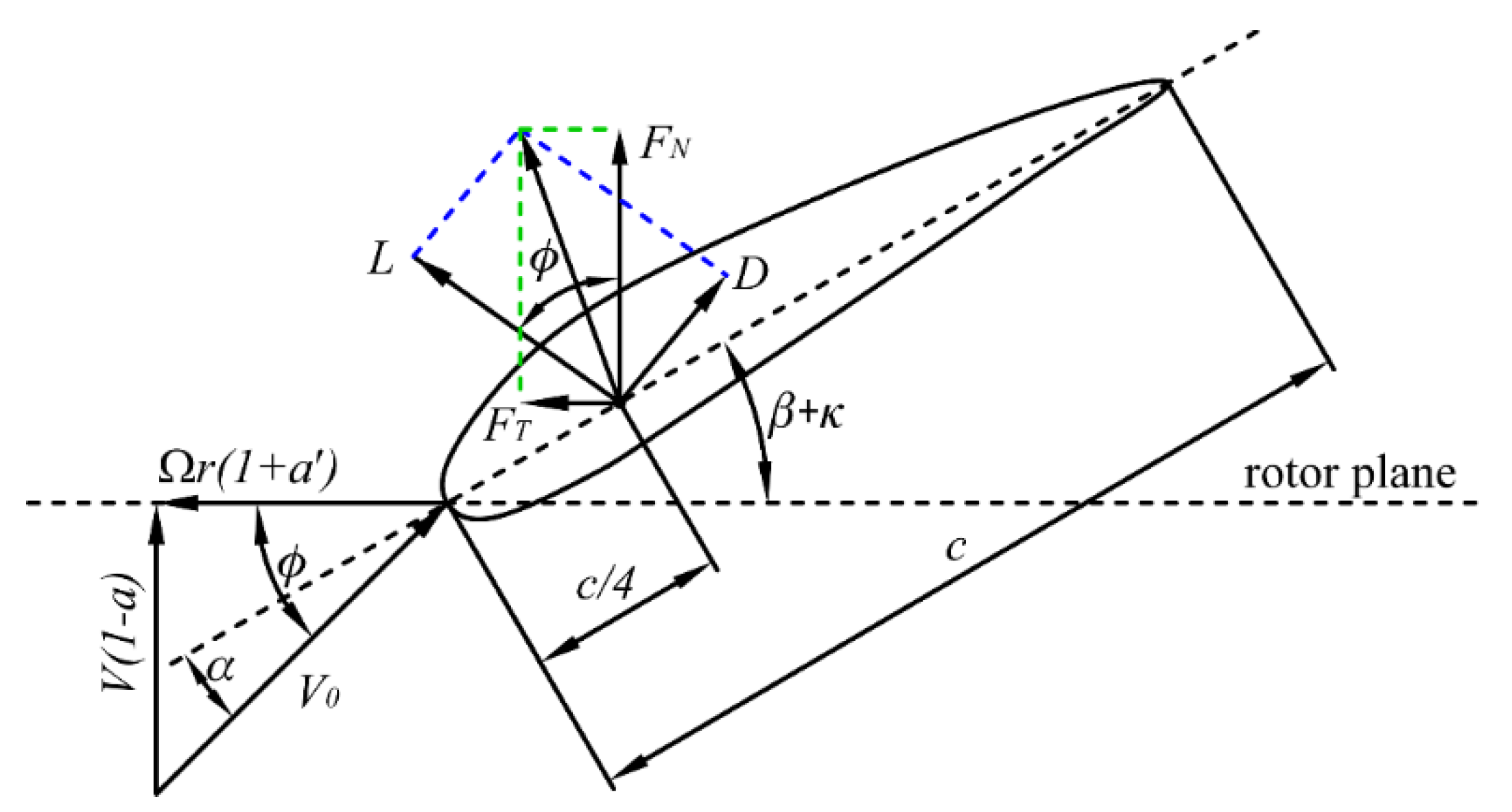
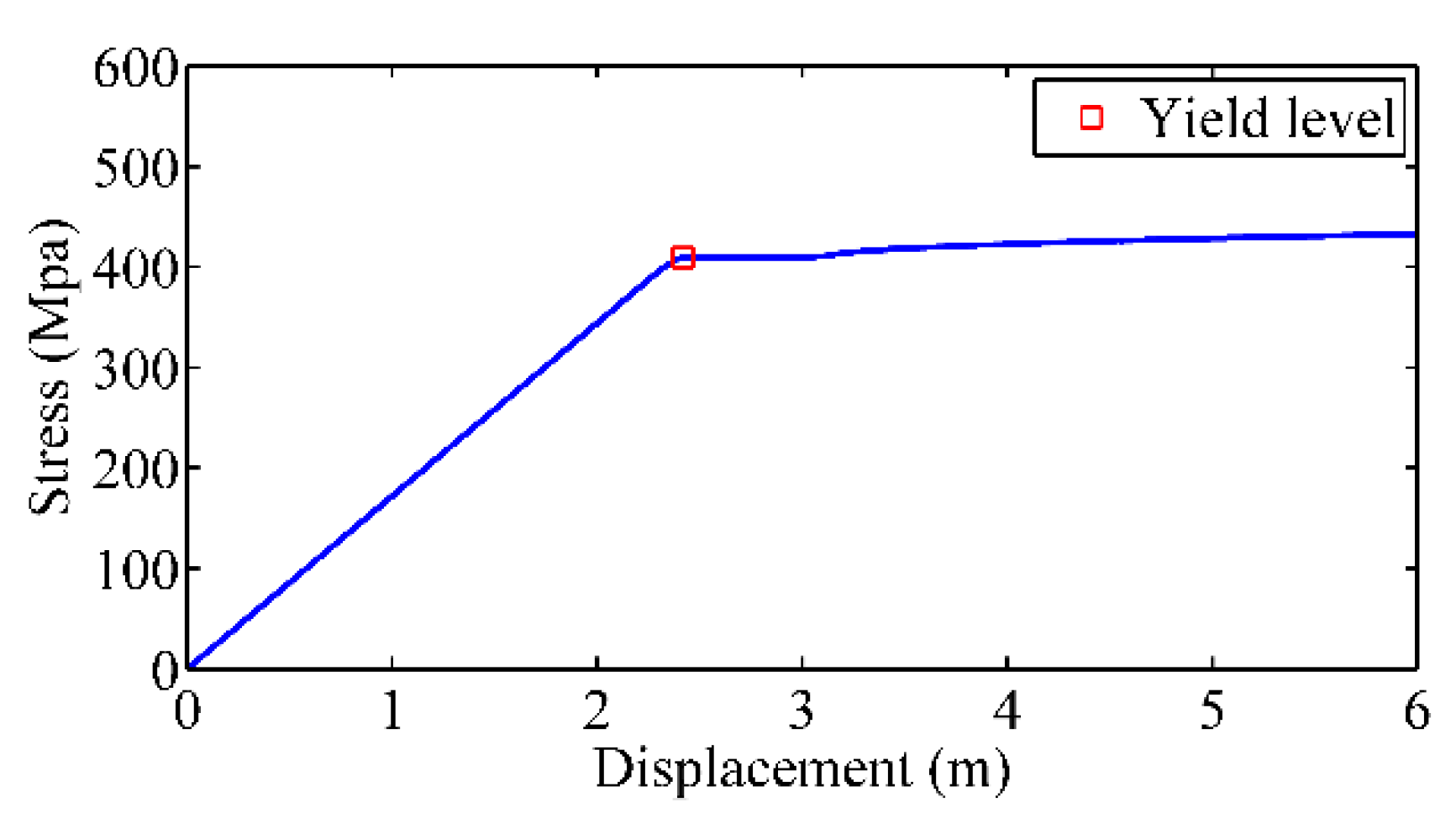
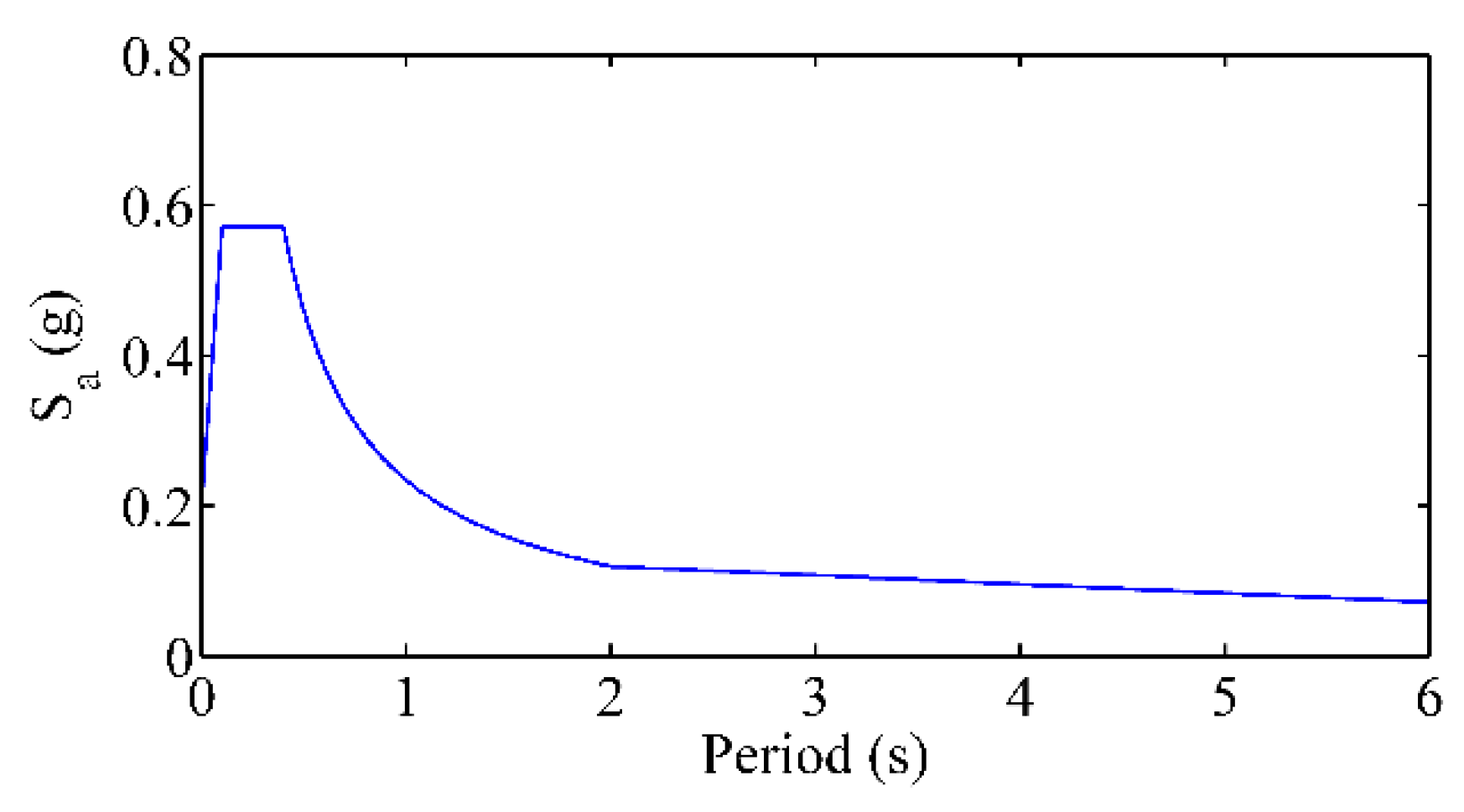
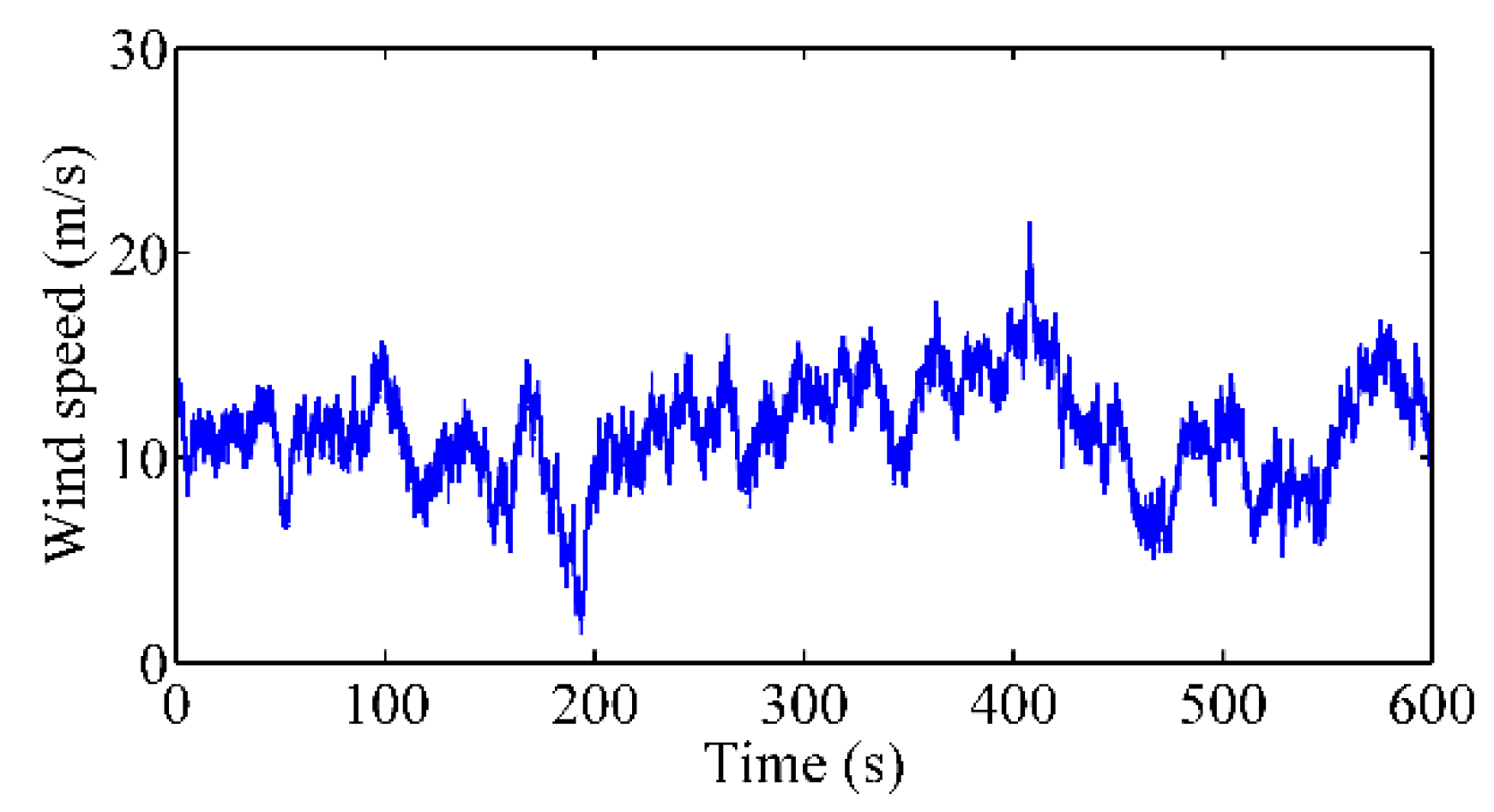


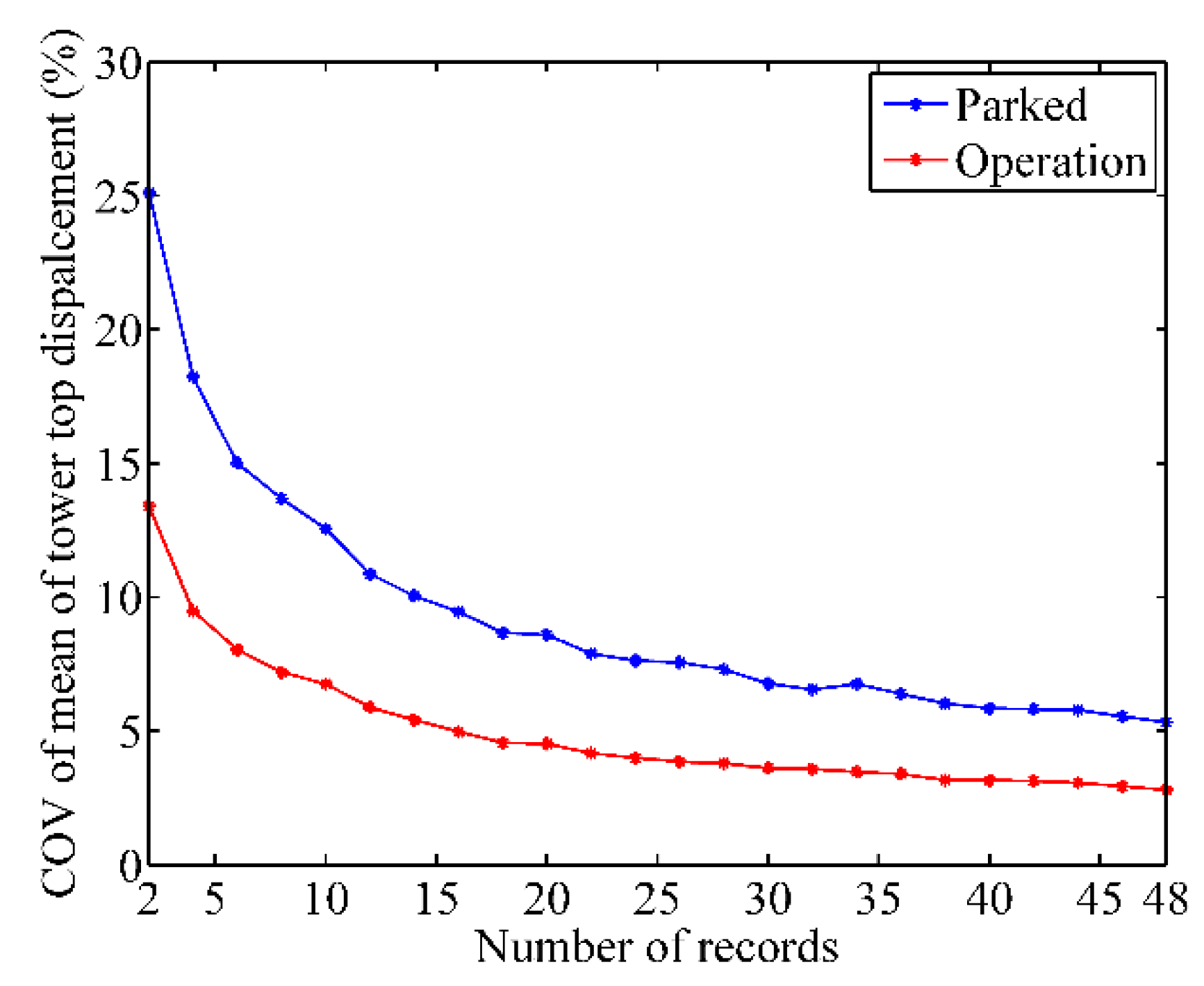
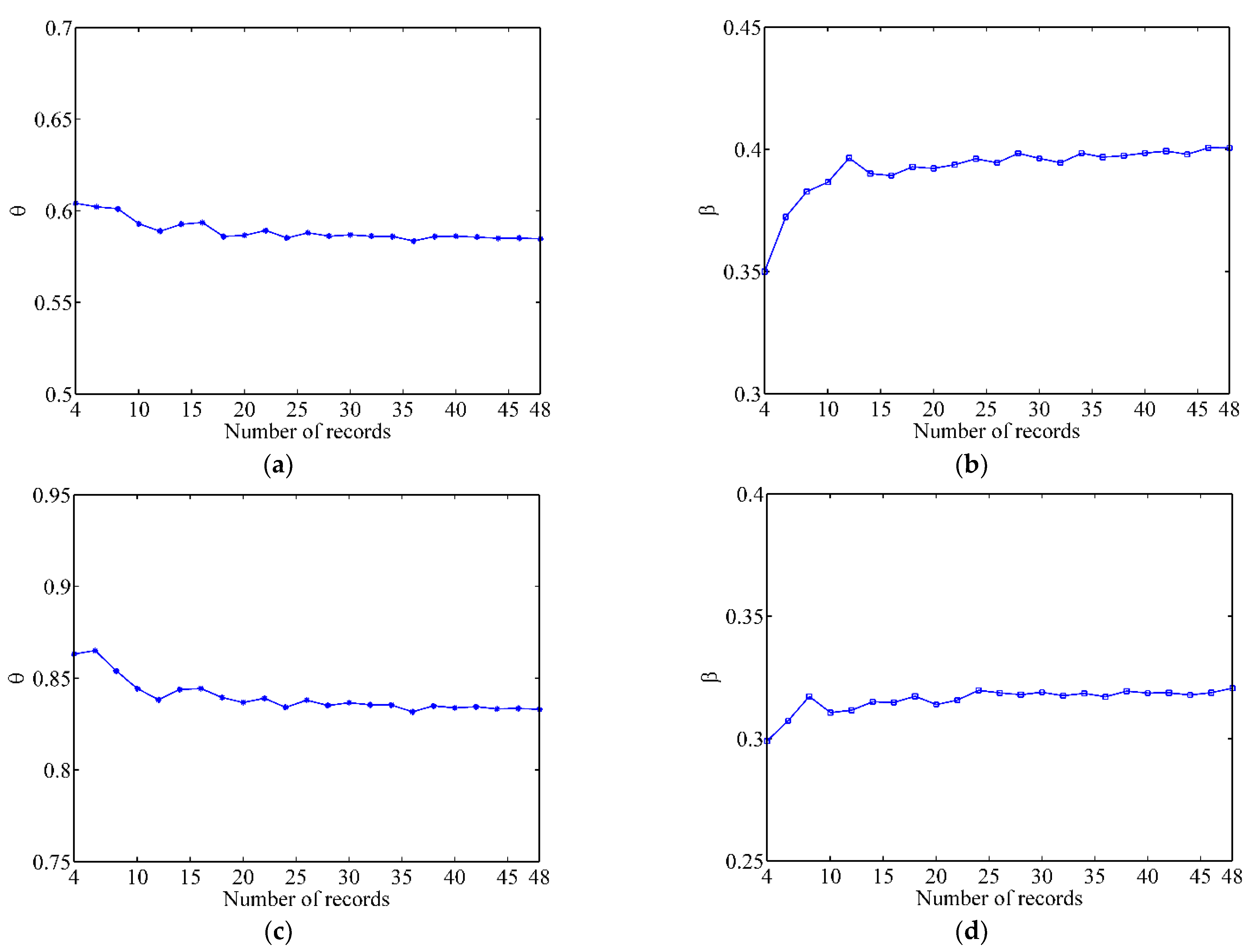
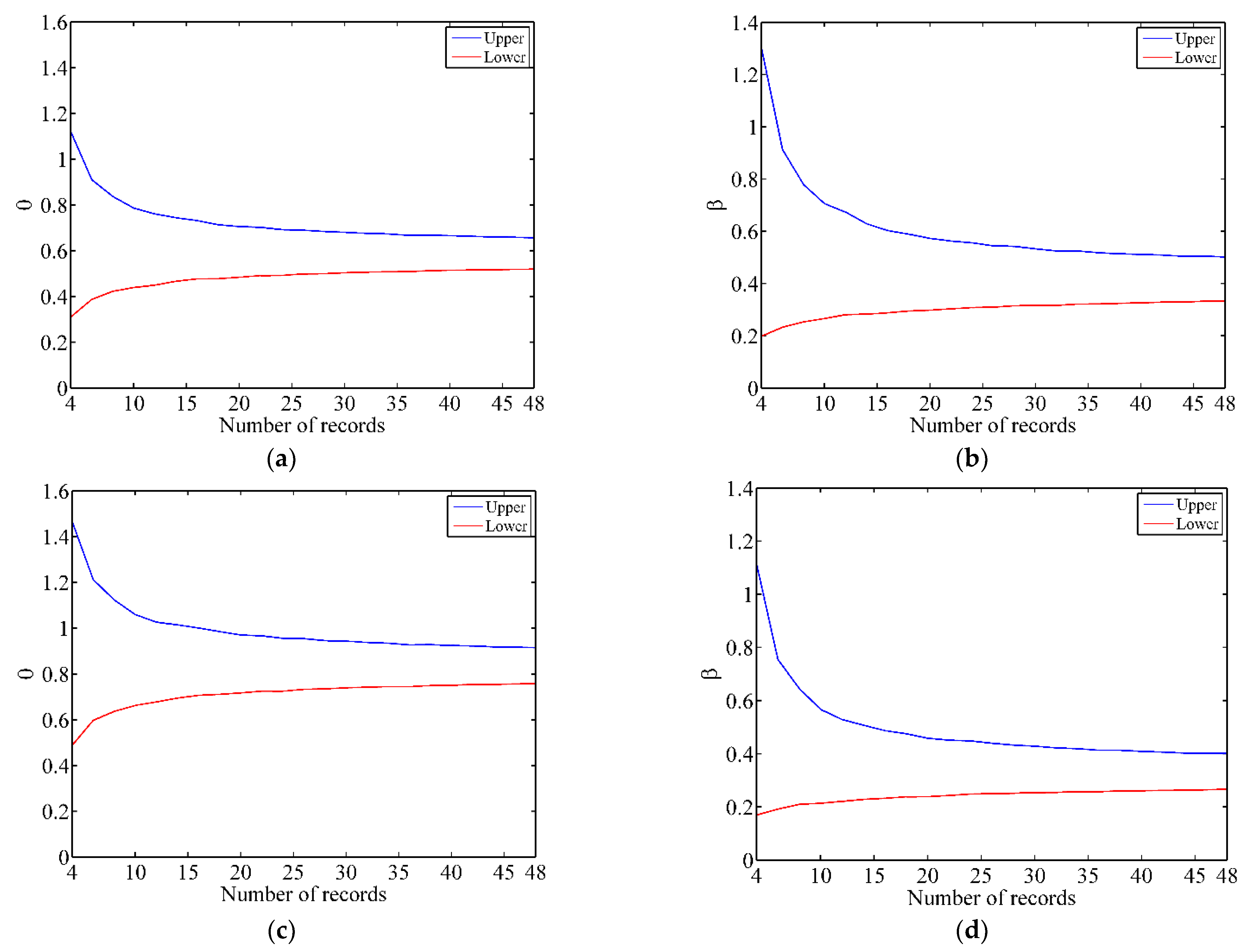


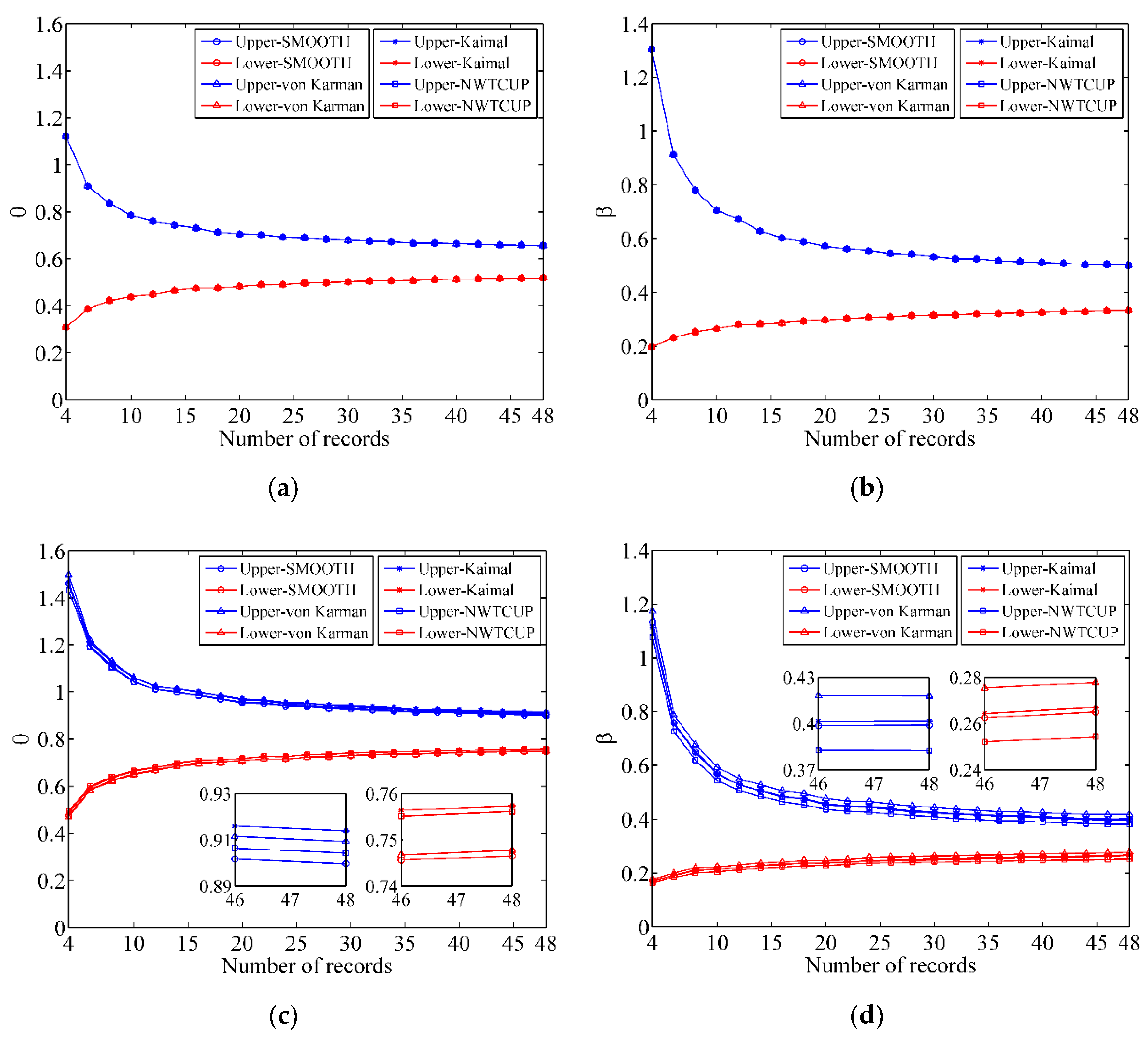
| NREL 5 MW Baseline Wind Turbine Properties | |
|---|---|
| Rating | 5 MW |
| Rotor orientation, configuration | Upwind, 3 blades |
| Control | Variable speed, collective pitch |
| Rotor, hub diameter | 126 m, 3 m |
| Hub height | 90 m |
| Cut-in, rated, cut-out wind speed | 3 m/s, 11.4 m/s, 25 m/s |
| Cut-in, rated rotor speed | 6.9 rpm, 12.2 rpm |
| Rated tip speed | 80 m/s |
| Blade length | 61.5 m |
| Blade mass | 17,740 kg |
| Hub mass | 56,780 kg |
| Nacelle mass | 240,000 kg |
| Tower above ground height | 87.6 m |
| Tower mass | 347,460 kg |
| Wind Spectrum | ||||
|---|---|---|---|---|
| Parked | Normal Operation | Parked | Normal Operation | |
| Kaimal | 26 | 32 | 36 | 26 |
| NWTCUP | 26 | 28 | 36 | 22 |
| SMOOTH | 26 | 30 | 36 | 24 |
| von Karman | 26 | 32 | 36 | 26 |
Publisher’s Note: MDPI stays neutral with regard to jurisdictional claims in published maps and institutional affiliations. |
© 2022 by the authors. Licensee MDPI, Basel, Switzerland. This article is an open access article distributed under the terms and conditions of the Creative Commons Attribution (CC BY) license (https://creativecommons.org/licenses/by/4.0/).
Share and Cite
Yuan, C.; Xie, Y.; Li, J.; Bai, W.; Li, H. Influence of the Number of Ground Motions on Fragility Analysis of 5 MW Wind Turbines Subjected to Aerodynamic and Seismic Loads Interaction. Energies 2022, 15, 2094. https://doi.org/10.3390/en15062094
Yuan C, Xie Y, Li J, Bai W, Li H. Influence of the Number of Ground Motions on Fragility Analysis of 5 MW Wind Turbines Subjected to Aerodynamic and Seismic Loads Interaction. Energies. 2022; 15(6):2094. https://doi.org/10.3390/en15062094
Chicago/Turabian StyleYuan, Chenyang, Yunfei Xie, Jing Li, Weifeng Bai, and Haohao Li. 2022. "Influence of the Number of Ground Motions on Fragility Analysis of 5 MW Wind Turbines Subjected to Aerodynamic and Seismic Loads Interaction" Energies 15, no. 6: 2094. https://doi.org/10.3390/en15062094







